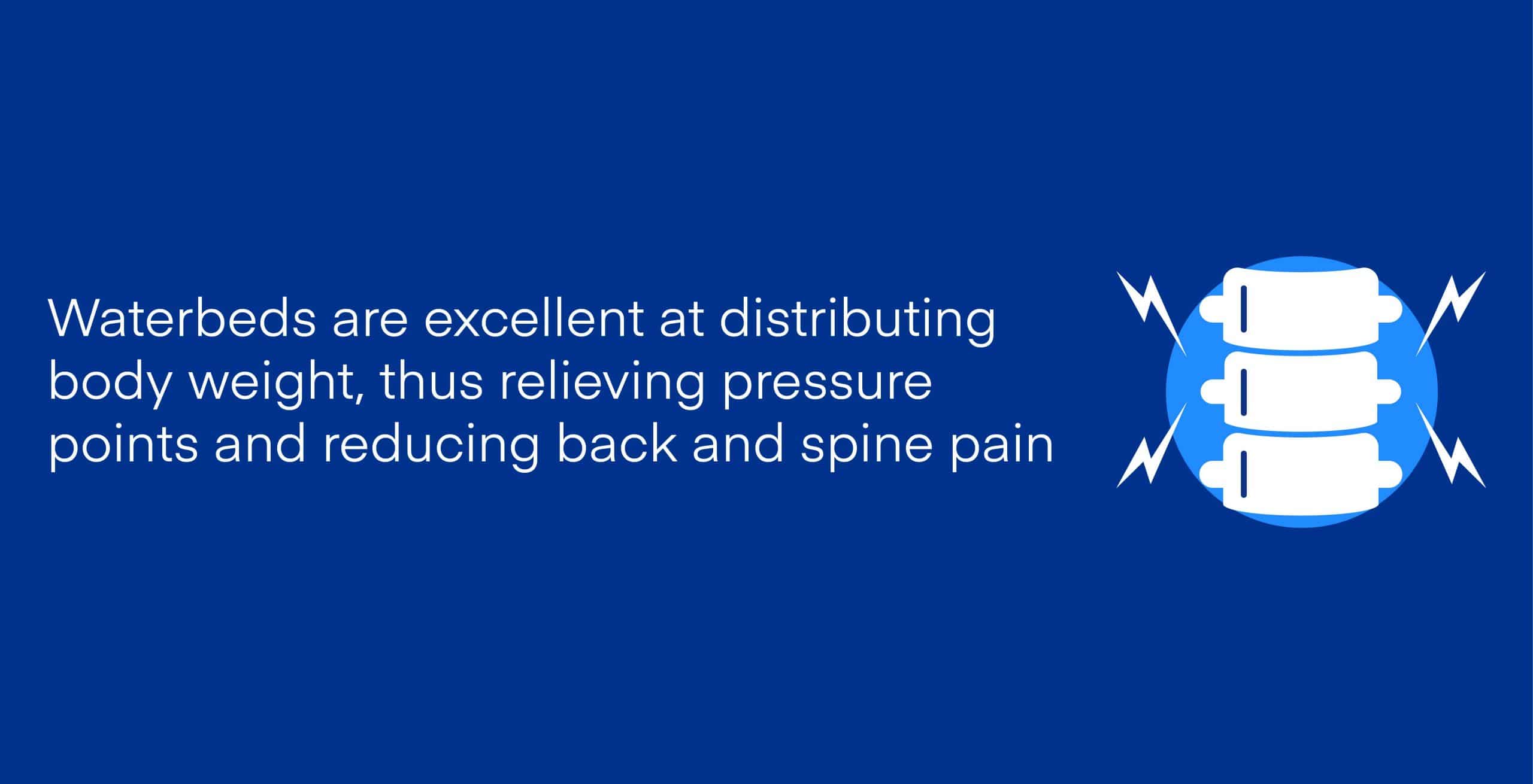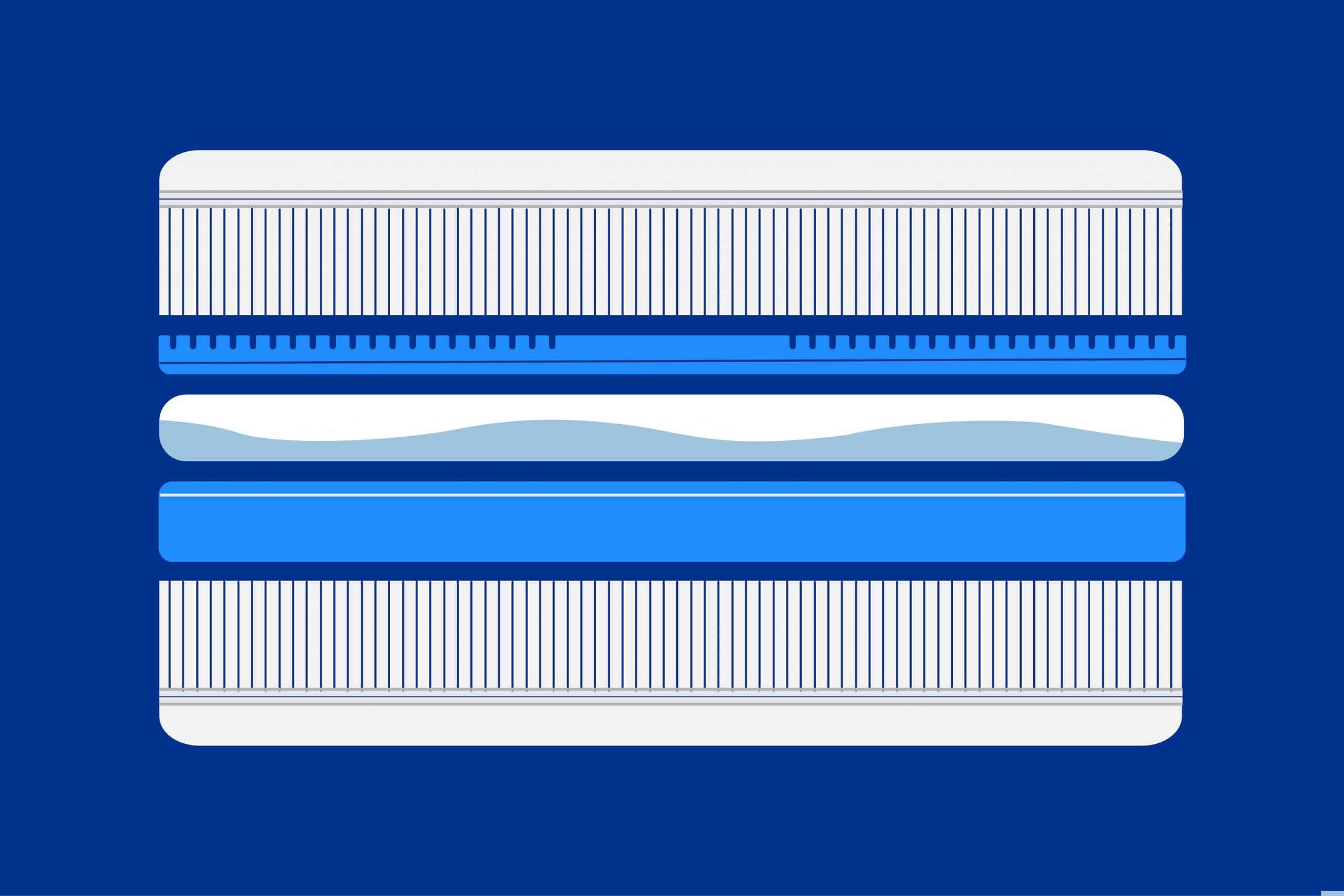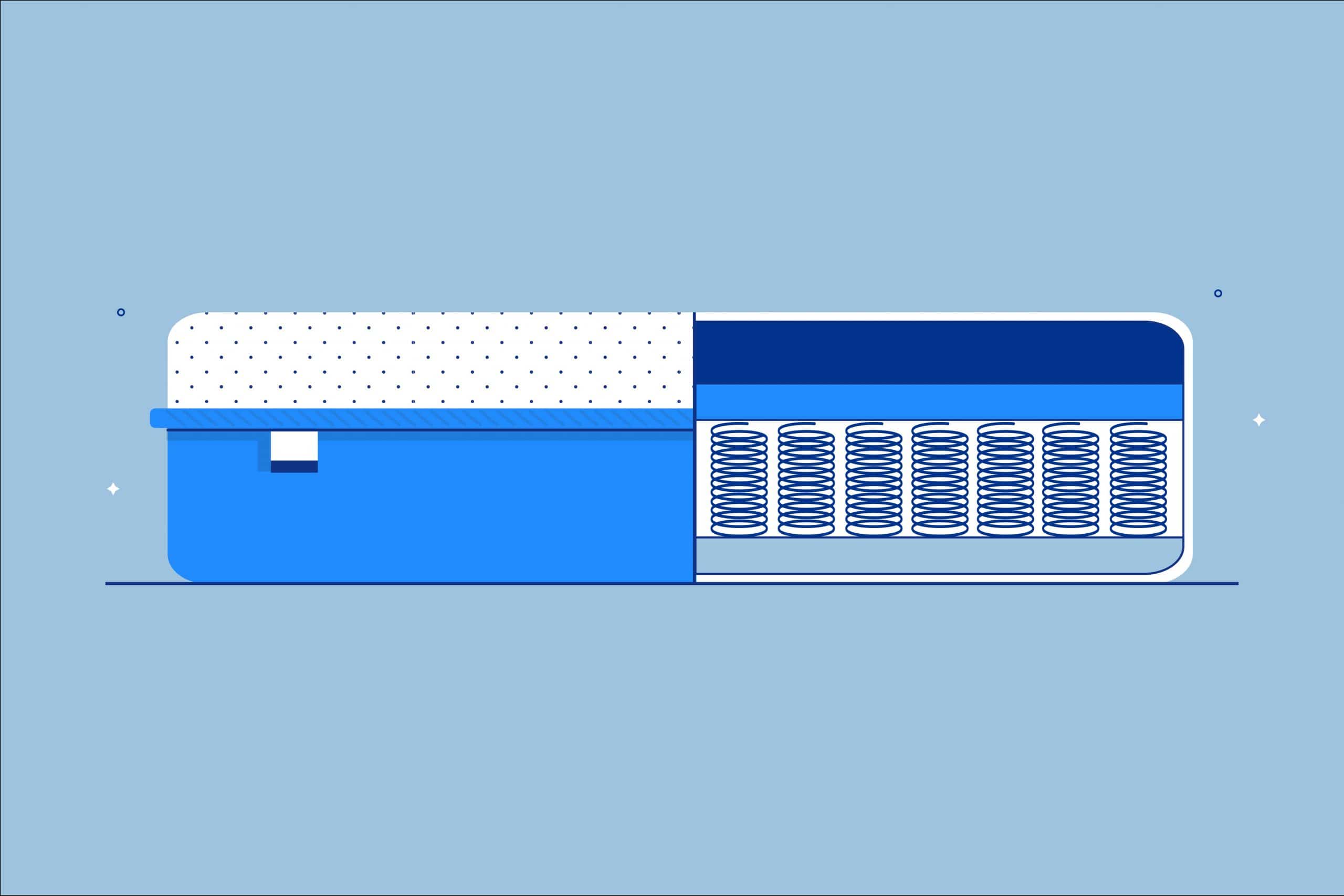Key Takeaways
- Novelty Mattress Type: Waterbeds were once popular but fell out of favor due to their drawbacks, such as maintenance, leak risks, and the need for special accessories. Nowadays, they are rare as consumers opt for more convenient and high-quality mattress options like memory foam and hybrids.
- Types of Waterbeds: Waterbeds come in two main types: hardside and softside. Hardside waterbeds have a wooden frame, while softside waterbeds use foam bolsters for support. Softside waterbeds are lighter and more adaptable to standard bedding and frames.
- Drawbacks of Waterbeds: Despite their benefits, including pressure point relief and heat therapy, waterbeds have lost popularity due to their excessive maintenance, potential for leaks, heavyweight, and unique bedding requirements. Newer mattress types offer similar advantages with less hassle, such as the pressure relief of memory foam, leading to the decline of waterbeds in the market.
Waterbeds were mainstream in the 1980s, with 1 in 5 Americans owning a waterbed, but the beds fell out of popularity just as quickly as they came to it. People started disliking them since they were leak-prone, banned from rental units, and bulky. Nowadays, waterbeds are rare because retailers focus on higher-quality mattresses instead, such as memory foam, hybrid, or latex beds.
What Is a Waterbed?
Waterbeds are vinyl mattresses filled with water rather than springs, foam, or latex. The water chambers are known as bladders and are either one large pouch or a series of small tubes. Old waterbeds came inside wooden frames and were called hardside waterbeds, though newer waterbeds support themselves and fit on any bed frame. Lots of waterbeds have temperature regulation devices so you can heat the water to stay warm at night.
When Were Waterbeds Invented?
Waterbeds date back as far as 3600 BCE and were first used by Persians who filled goatskin with water.
In the 1800s, waterbeds were rubber pockets filled with water and primarily used in hospitals because they didn’t cause bedsores and ulcers as other mattresses did.
In 1968, a design student named Charles Hall invented the patented vinyl waterbed for his master’s thesis. The bed quickly grew in popularity, but by the 90s, the demand for waterbeds had gone down because of their high maintenance needs.
Types of Waterbeds
Although some brands have their variations of waterbeds, the two main kinds of waterbeds are hardside and softside.
Hardside Waterbed
Hardside waterbeds have a wooden external frame to hold the rectangular shape of the bed. It’s essentially a large, wooden box you put the vinyl bladder into. There’s no pillow-top or extra padding, but there is a fabric casing over the vinyl shell. Hardside waterbeds are a bed frame with a headboard and footboard, so there’s no need to purchase a frame or foundation for it. However, the frames are often unique sizes, so standard-size bedding won’t fit on waterbeds.
Softside Waterbed
A newer, more popular waterbed type is a softside. The waterbed holds its shape with foam bolsters wrapped in a casing rather than wood. The foam frames also provide a more even surface and better edge support compared to wood frames. Softside waterbeds are lighter, yet more durable than the conventional hardside waterbed.
Softside waterbeds have a padded, foam top, and an upholstered base. They typically fit standard bedding, bed frames, and mattress foundations.
Why Use a Waterbed?
Waterbeds are excellent at distributing body weight, thus relieving pressure points and reducing back and spine pain. Heated waterbeds, in particular, are a form of heat therapy, easing tender muscles and reducing inflammation. They’re also cozy to sleep in during the winter.

Waterbeds are used for bedridden and paralyzed people as they don’t cause bedsores. After all, most hospital mattresses were usually waterbeds during the 60s.
Unlike mattresses with soft covers, waterbeds are easy to clean—all you need to do is wipe them down with vinyl cleaner.
Why Are Waterbeds Unpopular?
While waterbeds do have their benefits, the drawbacks to waterbeds are what led to their ultimate downfall. Newer types of mattresses provide more benefits than waterbeds and don’t come with the same risks.
- Excessive maintenance: The popular mattresses today—memory foam, hybrid, and latex—require very little maintenance compared to waterbeds, so people have leaned towards the easier and better options.
- Potential leaks: With a waterbed, there’s always the risk of the vinyl ripping, popping, or cracking, with the worst-case scenario being you wake up with your bedroom destroyed and water everywhere. Due to this risk, waterbeds aren’t allowed in rentals, and renter’s insurance doesn’t cover them.
- Heavy: Waterbeds weigh upwards of 2000 pounds (versus 150 pounds for the average mattress), so if you ever want to change up the look of your bedroom, moving your waterbed is near impossible without draining it.
- Use special accessories: Standard-size bedding and accessories don’t fit on hardside waterbeds and can easily slip off. Finding the right size of bedding for your waterbed is not only difficult but also expensive.
- Mold risks: If your waterbed leaks onto your carpet or rug, mold and mildew can develop. Mildew can also grow inside the mattress and make it toxic to sleep on.
Maintaining a Waterbed
While the maintenance isn’t as difficult for newer waterbeds, it’s still much more work compared to standard mattress maintenance. After all, the constant upkeep of waterbeds is why most people dislike them in the first place.
For starters, you have to fill the bed with water yourself and this can take 85 to 235 gallons of water, depending on your waterbed’s size. Since waterbeds get quite heavy, it’s smarter to fill them in your bedroom, but this means you need to maneuver a gardening hose through your house and to the bed.
While you don’t need to refill the waterbed’s water (unless you’re moving it), you do have to annually add a waterbed conditioner to the water. The conditioner keeps the interior vinyl supple and free of bacteria so there’s no algae growth. And if you do choose to move your waterbed, you have to attach a garden hose to the bed and drain the water similarly to how it’s filled.
Leaks are uncommon with newer high-quality waterbeds, but not impossible. In the event of a leak, patch the vinyl with liquid cement from a vinyl repair kit. It’s important to dry a wet mattress, even a waterbed, to deter mattress mold.
How Much Do Waterbeds Cost?
The price of a waterbed varies based on size, quality, and added features.
Low-range: $50 to $150
Lower end waterbeds are often super simple, full-wave or free flow beds with no frames. You have to purchase a liner, frames, heater, and a pump separately, so the total cost of the bed goes up. At this point, it’s better to opt for a waterbed at a higher price point.
Mid-range: $150 to $300
Most mid-range waterbeds are hardside waterbeds, though they typically come with heaters and pillow tops. They’re typically semi-waveless or completely waveless, meaning there’s little to no water motion. While rare, you can occasionally find self-supporting softside waterbeds at a mid-price point.
High-end: $300 to $2000
Pricier waterbeds come with all the accessories you need for maximum comfort and ease-of-use such as a portable heater, water conditioner, electric pump, and vinyl repair kit. High-end waterbeds are usually waveless and have softside frames and a pillow top for extra cushioning. A potential excellent choice for anyone looking at mattresses under $2000.
There’s a wide range of high-end waterbeds and they get pricier with larger mattress sizes, such as a king or California king mattress.
How Long Do Waterbeds Last?
The average lifespan of waterbeds is 10 to 15 years, so they last longer than standard mattresses today (7 to 10 years). Waterbeds don’t sag and develop indentations like latex or memory foam, but rather the vinyl eventually goes brittle and starts leaking. At that point, it’s time for a replacement.
FAQs
Where can you get a waterbed?
Only a fraction of waterbeds are sold now compared to twenty or so years ago since most people choose standard mattress types instead. Now, waterbeds are mostly sold online.
What is a waveless waterbed?
Waveless waterbeds have additional layers preventing water motion. They’re more supportive, sturdy, and comfortable compared to full-wave waterbeds, though they can be more expensive. A cheaper option to a waveless waterbed is a semi-waveless waterbed.
Are waterbeds cold?
Without a heater, waterbeds are quite cold. It’s not recommended to use a cold waterbed because cold water dissipates heat from your body faster than cold air can, putting you at risk of pain, soreness, and hypothermia.
Can you put bleach in a waterbed?
No, applying bleach to your waterbed or adding it to the water damages the vinyl and causes it to become brittle and crack, leaving it at risk for leaks. Instead, use a vinyl cleaner and conditioned water for your waterbed.
Does the water in a waterbed evaporate?
Since water contains oxygen, it might deplete and release a bit of moisture, though it would be very little and occur very slowly.
Conclusion
Waterbeds may act as mattresses for bed sores for some hospital patients. However, they’re still obsolete in today’s market and not worth the extra work to maintain them.
High-quality mattress types, such as memory foam or hybrid, provide similar support and pressure relief without the same maintenance. These beds offer surfaces quick to conform to sensitive areas while supporting the overall body.
About the author
Geoff McKinnen is a writer focusing mainly on the healthcare industry and has written articles on everything from foods to help you lose weight to the connection between Alzheimer’s and sleep. Geoff’s passionate about helping readers improve their well-being to lead happier lives. Outside of work, Geoff enjoys cycling and hiking and believes that by leading a healthy lifestyle, he can help others do the same.
View all posts





